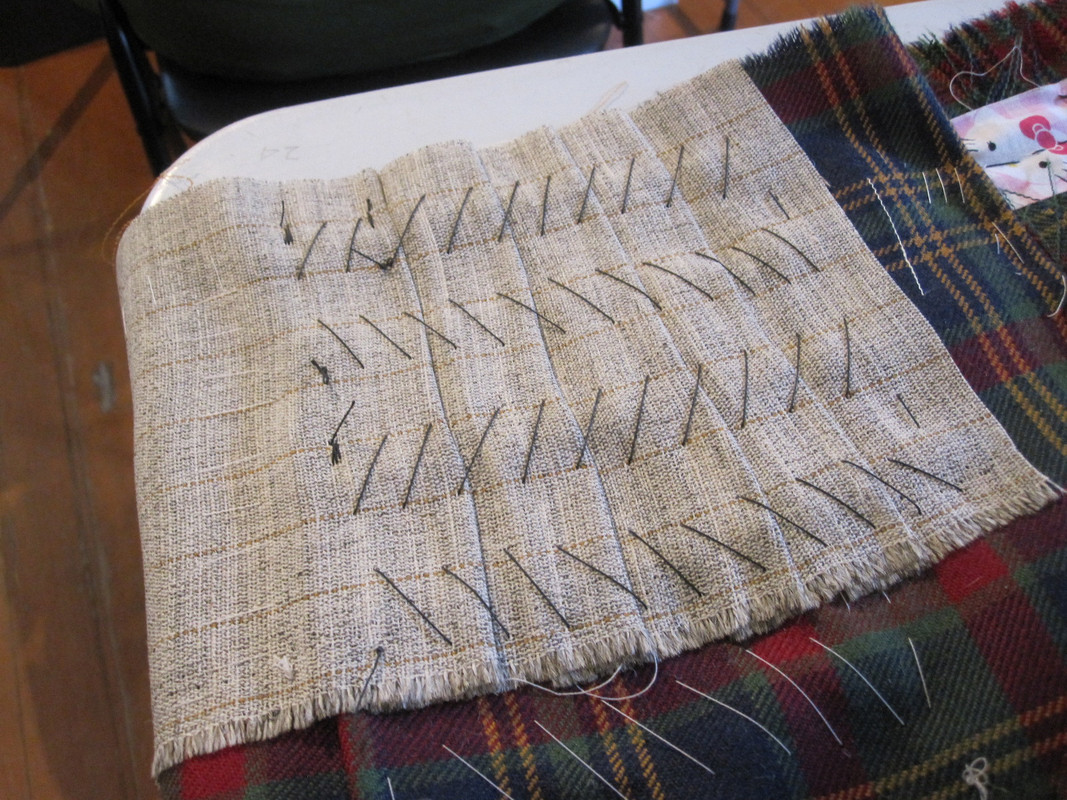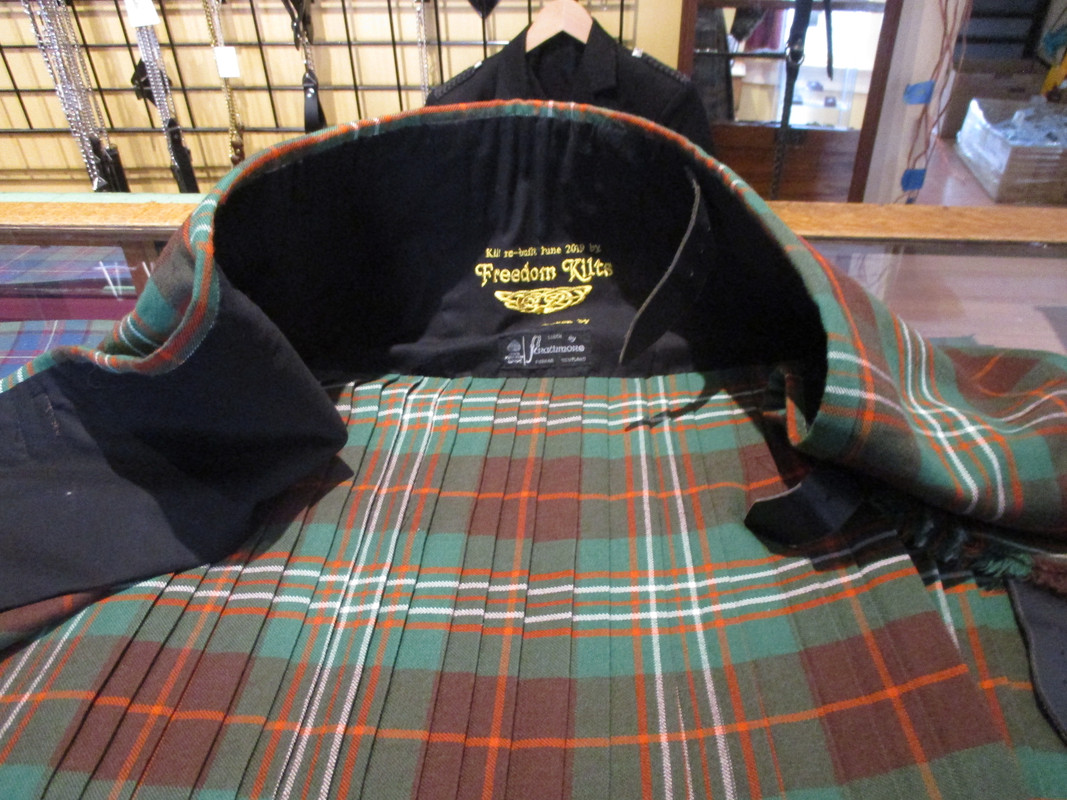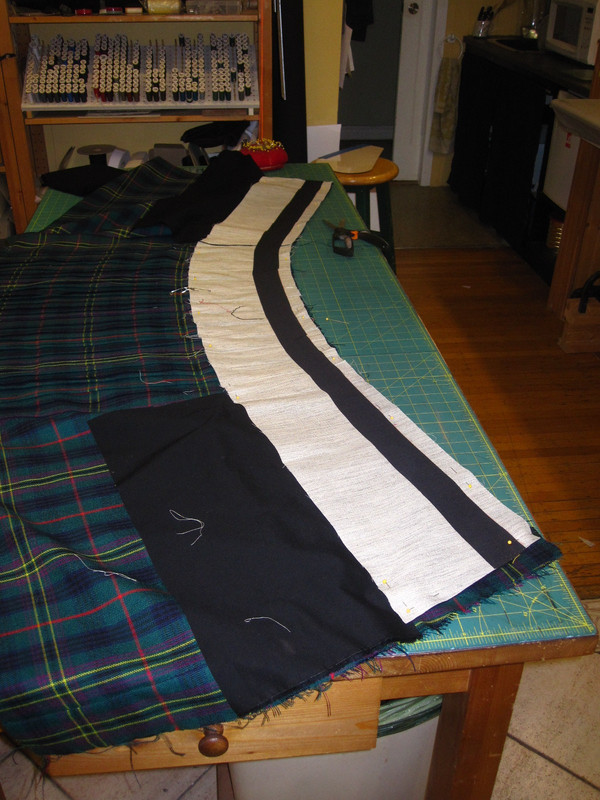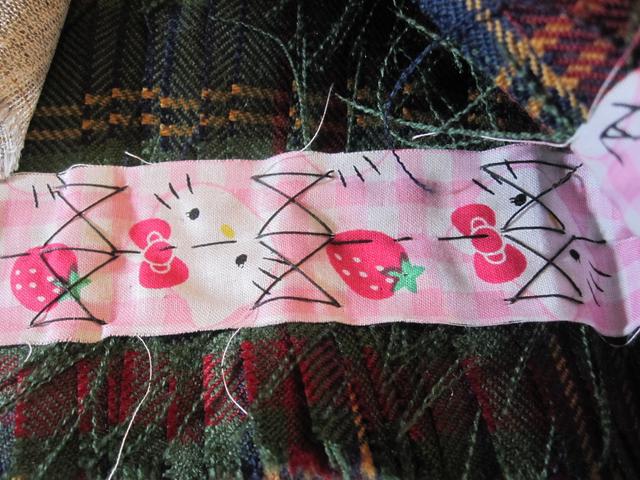|
-
10th October 23, 11:00 AM
#1
First of Possibly Many Construction Questions
Most of our (Marching Band) kilts, from 1991, are the ones with the black lining and the interfacing that covers the stitched section of the pleats. We have a few kilts that are slightly older, which have an ivory lining and two layers of interfacing, but only for the first 2 inches below the waist band. See pics.
99F6D2D8-2DBD-47D1-BC34-802C0970F1F1.jpg
5F213F23-4CA4-4BEE-8C9F-226AC5298811.jpg
I am a seamstress, but my specialty/job is wedding dresses. My feeling is that the full interfacing is nicer construction, but maybe there’s a reason for not extending the interfacing. Since I need to replace the lining, I wanted to ask whether I should replace the interfacing as long as I’m at it. Steve said there are better options for interfacing these days, so maybe members can chime in about what material to use as well.
-
-
10th October 23, 05:02 PM
#2
In your first photo, there is just one layer of interfacing. And it is not tapered. It is also not connected to the interfacing in the aprons.
The purpose of interfacing is to give body and vertical stiffness to the garment. Think boning.
There should be multiple layers of interfacing with folds to allow tapering. The interfacing should extend across both aprons as well as in the back.

The interfacing should allow the back of the kilt to stand up all on its own.

In your second photo, the narrow strip is called the Stabilizer. This is sort of like a built-in belt and gives horizontal strength to the garment.
Both the interfacing and the stabilizer should act as one unit. Some makers sew them together as such.

This should all be firmly anchored inside the kilt without stitches showing through to the outside. The straps and buckle are then sewn through the outer Tartan fabric and anchored to the Stabilizer.

Last edited by Steve Ashton; 10th October 23 at 05:15 PM.
-
The Following 3 Users say 'Aye' to Steve Ashton For This Useful Post:
-
10th October 23, 07:04 PM
#3
Thanks, Steve. Much better than the words I was trying to organize!
The traditional interfacing which Steve shows is old-fashioned hair canvas, as might be found in the breast area of a man's suit coat. It becomes important because some of the pleat fabric is usually trimmed away to reduce bulk, as shown in your second photo. The stabilizer provides an anchor for the strap buckles, which keeps the tension away from the pleat/interfacing structure.
You may chuckle about your son's sewing ability... My contention is that if one has basic bachelor level sewing skill---by which I mean buttons and trouser hems---and sufficient stubbornness, they can make a kilt. I did, with just about that much experience to start with. You'd have an easier time, but I'll bet your son could do it, too.
You'll find much useful detail in the TAoK book. There are different styles used by different people to make kilts, as you've discovered. Steve is showing the style used in the book.
: : :
Ken Sallenger - apprentice kiltmaker, journeyman curmudgeon,
gainfully unemployed systems programmer
-
The Following User Says 'Aye' to fluter For This Useful Post:
-
10th October 23, 07:43 PM
#4
Thank you both. I’m still waiting for the book. These last few kilts needing repair are not being worn this season, so I have plenty of time to spare. It’s fascinating to see the differences in construction.
When you say “apron”, is that the interfacing/lining combo on the two front sections that wrap? Or the entire front pieces?
The lining and interfacing in my first picture doesn’t have folds, rather is cut in a curved trapezoidal shape - if that makes sense. The interfacing is sewn to the lining at the bottom edge, and is basted/stitched to the pleats and to the sides of the front linings. The black cotton had been hand-stitched along all four edges.
In Steve’s pictures (aside from a glimpse of Hello Kitty) it looks like the interfacing is sewn to a separate tartan piece. Because the top of the pleats in our kilts has been cut away, I don’t know that would work for these…. unless it were sewn down at the bottom. Edit: disregard this part. I just needed my glasses. Haha!
Can’t wait to get the book!!
Last edited by Naught; 10th October 23 at 07:46 PM.
-
-
11th October 23, 09:07 AM
#5
 Originally Posted by Naught

Thank you both. I’m still waiting for the book. These last few kilts needing repair are not being worn this season, so I have plenty of time to spare. It’s fascinating to see the differences in construction.
When you say “apron”, is that the interfacing/lining combo on the two front sections that wrap? Or the entire front pieces?
The lining and interfacing in my first picture doesn’t have folds, rather is cut in a curved trapezoidal shape - if that makes sense. The interfacing is sewn to the lining at the bottom edge, and is basted/stitched to the pleats and to the sides of the front linings. The black cotton had been hand-stitched along all four edges.
In Steve’s pictures (aside from a glimpse of Hello Kitty) it looks like the interfacing is sewn to a separate tartan piece. Because the top of the pleats in our kilts has been cut away, I don’t know that would work for these…. unless it were sewn down at the bottom. Edit: disregard this part. I just needed my glasses. Haha!
Can’t wait to get the book!!
Hello Naught
Apron usually refers to the outer layer of the front, unpleated part of the kilt, and usually all that goes into making it. The inner layer is usually differentiated as the under apron.
As I have to reduce the waist size of my kilts almost every year I don't make quite such an elaborate job of the lining, but I always include a stabiliser strip which is fixes along the whole of the waistline at the narrowest point.
When attaching the stabilizer I ease in the kilt 2 inches in the finished measurement - usually around 1/2 an inch on each of the aprons and 1 and 1/2 inches across the pleats so that the wool and the stitching of it is not under any strain. I started to do that when I first took one of my kilts apart and saw how the threads were distorted after about 6 months wear.
For a layer which doesn't have to hold firm I have cut the cloth on the bias, as it can then be moulded into shape using sewing and stretching techniques. Gathering at the waist edge and careful pressing with steam will usually shape lining fabric as much as required for a kilt, even for a woman's narrower waistline.
Anne the Pleater
I presume to dictate to no man what he shall eat or drink or wherewithal he shall be clothed."
-- The Hon. Stuart Ruaidri Erskine, The Kilt & How to Wear It, 1901.
-
The Following User Says 'Aye' to Pleater For This Useful Post:
-
11th October 23, 10:51 AM
#6
 Originally Posted by Naught

Thank you both. I’m still waiting for the book. These last few kilts needing repair are not being worn this season, so I have plenty of time to spare. It’s fascinating to see the differences in construction.
When you say “apron”, is that the interfacing/lining combo on the two front sections that wrap? Or the entire front pieces?
The lining and interfacing in my first picture doesn’t have folds, rather is cut in a curved trapezoidal shape - if that makes sense. The interfacing is sewn to the lining at the bottom edge, and is basted/stitched to the pleats and to the sides of the front linings. The black cotton had been hand-stitched along all four edges.
In Steve’s pictures (aside from a glimpse of Hello Kitty) it looks like the interfacing is sewn to a separate tartan piece. Because the top of the pleats in our kilts has been cut away, I don’t know that would work for these…. unless it were sewn down at the bottom. Edit: disregard this part. I just needed my glasses. Haha!
Can’t wait to get the book!!
The aprons of a kilt are the two flat sections that overlap.
The image of the folded interfacing was to show how the interfacing is folded and blanket stitched to create a curve the extra fabric you refer to is the back side of the deep pleat.
There is enough fabric left after the excess is cut-away to tack the interfacing to the Tartan fabric. This idea is that the interfacing should not move or ball up with use.
Perhaps this shot of the Stabilizer being sewn in will show how the Stabilizer and interfacings are tacked to the cut-aways inside the pleats.

Last edited by Steve Ashton; 11th October 23 at 10:52 AM.
-
The Following User Says 'Aye' to Steve Ashton For This Useful Post:
 Posting Permissions
Posting Permissions
- You may not post new threads
- You may not post replies
- You may not post attachments
- You may not edit your posts
-
Forum Rules
|
|













 :
:










Bookmarks